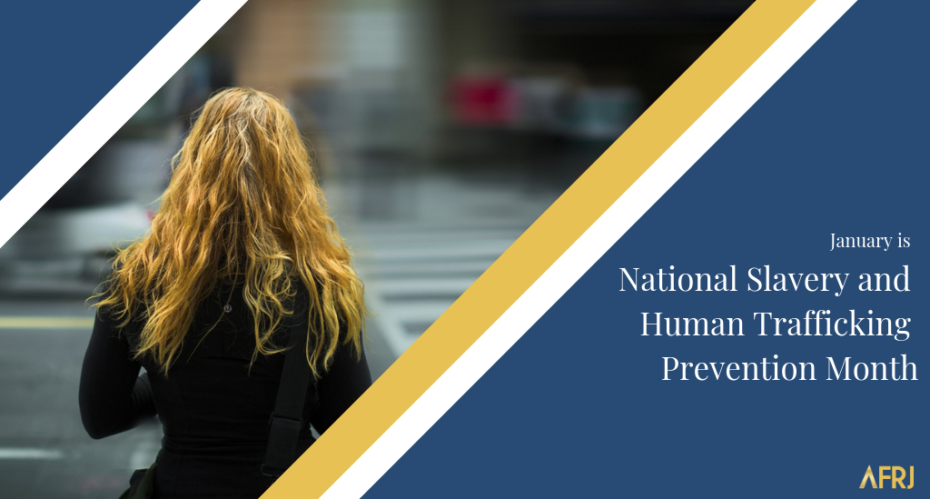The United States has declared January as National Slavery and Human Trafficking Prevention Month and January 11th as National Human Trafficking Awareness Day.
Much of the fight to eradicate human trafficking will be won by preventing it in the first place. The term prevention is heard often in the anti-trafficking field, including prevention education, awareness, demand, etc. But what does all of this mean? Are there different types of prevention?
The AFRJ® has distilled prevention into three categories that must all be addressed in each community for comprehensive prevention efforts to take place. In order to PREVENT human trafficking, communities must be made aware that this evil exists and must be educated about what puts children, youth, and adults at risk in their cities.
While there is no one face of a human trafficking victim, certain populations are more vulnerable. Understanding and addressing factors that lead to vulnerability will aid in preventing exploitation. Further, without demand, human trafficking would not exist. Communities must consider how to address this root problem – in the lives of individuals, in our culture, and in our laws and policies.
Awareness. It may seem hard to believe, but there are still individuals and communities unaware of the evil of human trafficking. Awareness of human trafficking is crucial. If people don’t know what exists, they can’t stop it. However, when exploring prevention efforts that exist in your community, it is important to make sure that your community is made aware of all forms of human trafficking – sex trafficking, labor trafficking, and organ trafficking. Communities must know what human trafficking looks like, the types that exist, who is impacted – men, women, and children – and where it happens. Awareness may be in the form of handouts, pamphlets and posters, public service announcements, videos, presentations, programs, educational curriculums/prevention programs for students, books, and more. Awareness is the first step in combating human trafficking.
Vulnerabilities. Human trafficking is often an end result of unaddressed vulnerabilities. Human trafficking prevention includes addressing vulnerable populations that traffickers prey upon. Traffickers look for vulnerabilities such as homeless youth, youth online, youth aging out of foster care, individuals fleeing violence, poverty, or natural disasters, individuals with disabilities, and those who have suffered other types of abuse or exploitation in their lifetimes. Programs that come alongside these at-risk populations are all considered prevention because they intervene before a trafficker does and solve for vulnerabilities that can lead to exploitation.
Demand. Human trafficking would not exist if there was not a demand for it. It is important to look to the buyers of sex and organs on the black market, and to our own purchases, in order to understand what fuels human trafficking. Educating communities about demand and discussing how to address it are crucial steps in preventing human trafficking. Putting laws and consequences into place for buyers who engage in exploitation is a key preventative action.
This month, take time to make yourself aware of what human trafficking is and what it looks like. Explore programs and efforts in your community that serve vulnerable populations, and become educated about the demand of human trafficking as well as how you can combat it.
Check out the human trafficking resources and information on our website, sign up for Engage Together® communications to get monthly resources of existing efforts sent right to your inbox, earn your Human Trafficking Awareness Badge through our Justice U™ initiative and get equipped to increase your impact, or review resources specific to your role and discover how you are uniquely positioned to engage.

